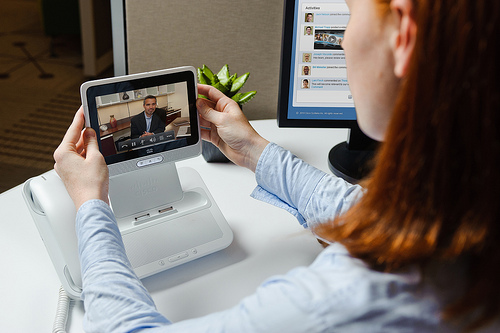Since the start of this year, there has been some interest shown by traditional hard-copy media publishers and book publishers in the idea of e-books and similar technologies. This has mainly been brought about by the arrival of devices like the Amazon Kindle and the Apple iPad. This concept has interested the newspaper and magazine publishers who have fund the value of their hard-copy titles dwindling as readers place more value on Web-hosted online news sources.
“Electronic hard copy” becoming only for the Apple iPad
This has intensified with the arrival of the Apple iPad where nearly every mainstream newspaper publisher is offering a subscription-based app for this platform and moving towards placing their online content behind a subscription-driven paywall, The biggest fear that I have about the current “electronic hard copy” situation is that all of the publishers will simply develop their “electronic hard copy” projects so that they only work with the Apple iPad.
Other platforms that exist
There are touch-based Internet-tablet platforms other than the iPad that can do the job of being an endpoint for “electronic hard copy” reading. The ones that come to mind are the Google Android platform which will be evolved into a touch-based Internet-tablet form factor as well as touch-enabled computers that run Microsoft’s Windows Vista or 7 operating systems. Infact I have viewed this site through a Hewlett-Packard TouchSmart “all-in-one” desktop PC at HP’s stand during the PMA Digital Life Expo yesterday in order to show a review of one of their products that was on the stand. This unit had the ability to “click on to” links at the touch of a finger or you could stroke your finger upwards to scroll through the site.
Similarly,there could be other touch-enabled Internet tablet platforms written for other embedded operating systems like Symbian, Bada or Maemo. As well, Microsoft can also provide a “scaled-down” distributions= of their Windows 7 codebase as the basis of a touch-enabled Internet-tablet device.
A common “electronic hard copy” distribution platform
What needs to happen is for the creation of a common “electronic hard copy” distribution that allows for the support of periodical content that is provided for free, “by the unit” or on a subscription basis in a similar manner to regular hard-copy periodicals. It should allow for authenticated distribution, rich-media content such as animation or video, search and interactivity amongst other things. It should also allow the publishers to “brand” their content and see a layout in a similar manner to how the hard-copy form has been presented.
For periodical content, technologies like the RSS Web-feed platform could be used as a basis for “pushing” newer issues to the device through the life of a subscription while there could be support for content-specific paradigms. In the case of comic-strip content, there could be the ability to scroll through each frame which would be variably-sized and perhaps may be accented with multimedia. Some material could allow for searching, filtered browsing and / or dynamic typesetting, such as a “full” dictionary that can be filtered down to provide words considered “legal” for Scrabble or a dictionary that emphasises in another colour “Scrabble-legal” words.
As well, you should be able to buy content for the device from anywhere other than the device’s “app store” like the way a Nokia phone user can get an app for their phone from the developer’s Web site, the Handango app store as well as the Nokia Ovi app store. This avoids the situations that have been occurring with Apple and the way they have been approving or disapproving apps for their iTunes App Store.
Conclusion
Once a common distribution platform exists for “electronic hard copy” content that works in a manner that breeds competitiveness, then more people would be able to benefit from this new way of distributing books, newspapers and magazines.

